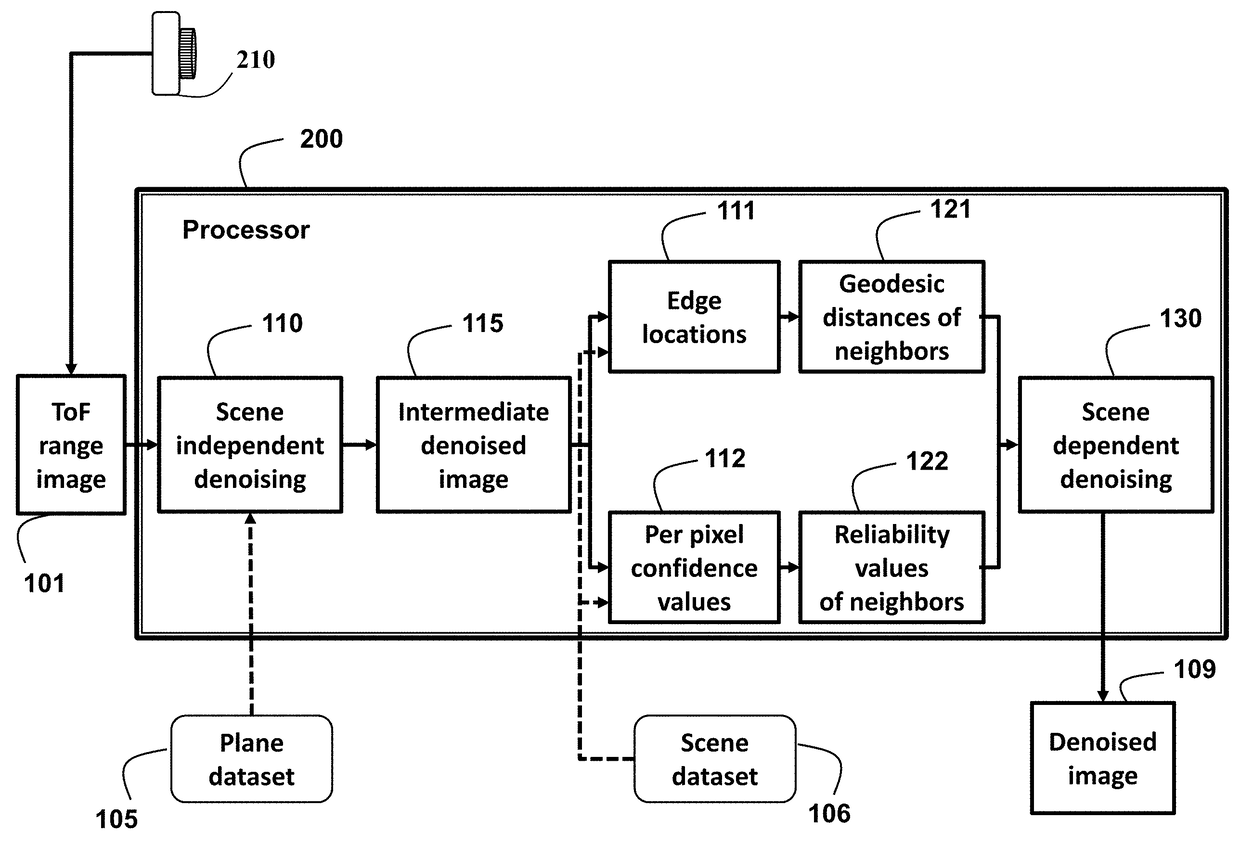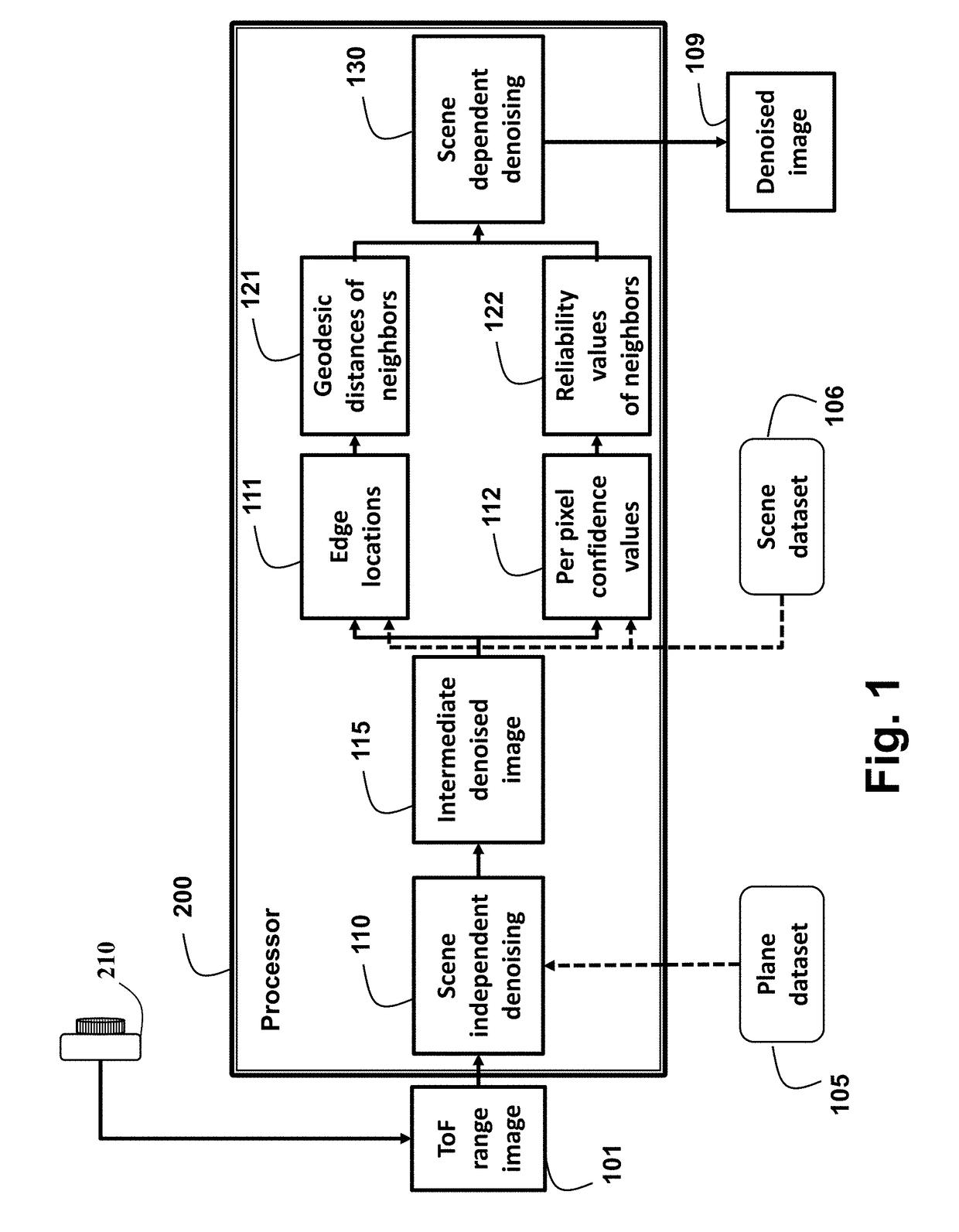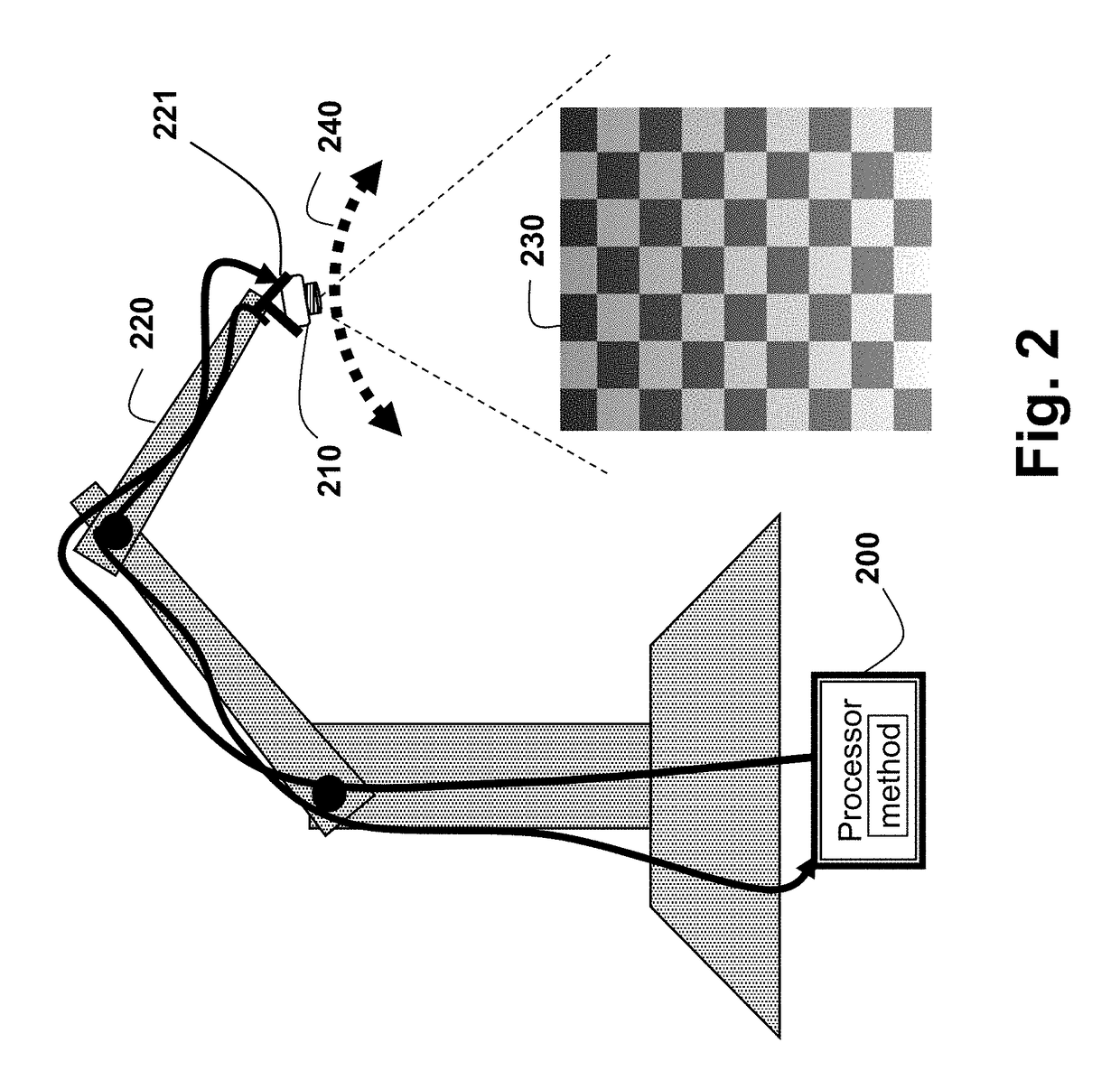Method for denoising time-of-flight range images
a time-of-flight range and image denoising technology, applied in image enhancement, image analysis, instruments, etc., can solve the problems of noise from tof cameras, measurement bias, and noise from tof camera hardware limitation, so as to reduce scene independent noise, reduce scene dependent noise, and reduce scene independent noise
- Summary
- Abstract
- Description
- Claims
- Application Information
AI Technical Summary
Benefits of technology
Problems solved by technology
Method used
Image
Examples
Embodiment Construction
[0016]As shown in FIG. 1, the embodiments of our invention provide a method for denoising a time-of-flight (ToF) range image 101 to produce a denoised image 109. The method can be can be performed in a processor 200 connected to memory and input / output interfaces by buses as known in the art, see FIG. 2.
[0017]Herein, we use range (a distance between a center of the camera and a 3D point in a scene) instead of depth (a Z coordinate of the 3D point in the camera coordinate system), because the range directly corresponds to a phase shift in the signals used by the ToF range camera. The amplitude of the range signal corresponds to a confidence value or reliability of the range measurement.
[0018]The method uses a data-driven approach for denoising the ToF range image by reducing scene independent noise based on a plane dataset 105 and scene dependent noise using a scene dataset 106, as described below. The datasets are used during training to learn various models, neural networks, and pa...
PUM
 Login to View More
Login to View More Abstract
Description
Claims
Application Information
 Login to View More
Login to View More - R&D
- Intellectual Property
- Life Sciences
- Materials
- Tech Scout
- Unparalleled Data Quality
- Higher Quality Content
- 60% Fewer Hallucinations
Browse by: Latest US Patents, China's latest patents, Technical Efficacy Thesaurus, Application Domain, Technology Topic, Popular Technical Reports.
© 2025 PatSnap. All rights reserved.Legal|Privacy policy|Modern Slavery Act Transparency Statement|Sitemap|About US| Contact US: help@patsnap.com



